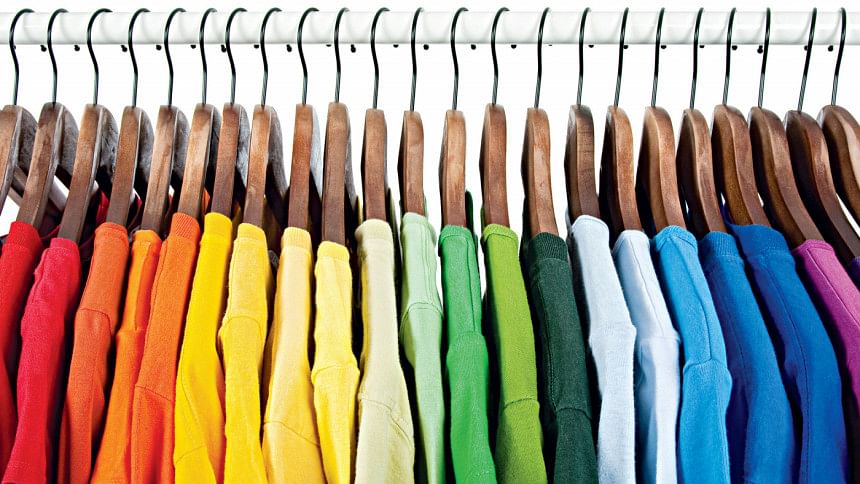Circular economy in RMG: Reducing and reusing waste is the way to go

Globally, one garbage truckload of textiles is landfilled or incinerated every second and less than 1 percent of fibres used in garment manufacturing are converted into new wearable clothing. This is due to the linear economy in the textile industry which is characterised by a one-way system: resources are converted into manufactured products which are sold for use and eventually discarded. The very nature of the fashion industry, requiring companies to adapt rapidly to emerging trends and changes in consumer demand, renders it damaging to the environmental quality of the planet.
In order to combat the inefficiencies built into this one-way system, experts have presented an ambitious vision of a new circular economy in the textile industry which limits waste and environmental pollution by keeping products in use through recycling. With younger generations more concerned about global challenges and environmental issues, consumption behavior is also likely to change gradually with consumers willing to pay more for sustainable goods. According to thredUP's 2020 Resale Report, resale grew 25 times faster than the retail sector in 2019, indicating that consumer preferences have started to shift towards second-hand products. As second-hand fashion emerges, business models in the fashion world will have to eventually make way for durable clothing and attractive resale strategies.
The Bangladeshi garment industry has already announced to the world that it is ready to embrace the idea of the circular economy in textile manufacturing. A partnership between the Global Fashion Agenda (GFA), Reverse Resources, P4G and the Bangladesh Garment Manufacturers and Exporters Association (BGMEA)—known as the Circular Fashion Partnership—has been initiated to reduce waste and depletion of natural resources caused by textile manufacturing through supporting the development of the recycling industry in Bangladesh. The Circular Fashion Partnership, which has currently united more than 30 international brands such as H&M, Marks & Spencer, OVS, Bershka, C&A, Kmart Australia, garment manufacturing companies and recycling firms in Bangladesh, can prove to be the epitome of sustainability in fashion for other leading garment-producing nations such as Vietnam and Indonesia.
The Global Fashion Agenda, a Denmark-based sustainability forum that is leading the new initiative, has outlined two workstreams for the project: the first workstream involves production of new garments made from recycled waste, and the second workstream involves the implementation of a Circular Fashion Stock Marketplace for overstock garments that have piled up as a result of cancelled orders during the Covid-19 crisis in Bangladesh. This initiative will also play a crucial role in developing countries to help pursue effective strategies in achieving the Sustainable Development Goal 12: responsible consumption and production.
Moreover, through facilitating the transition to a circular economy in the global market for textiles, the partnership has the potential to decrease carbon, water footprint and waste to landfills by 15 percent. According to Reverse Resources, a tracking and trading platform for textile waste working to promote the concept of circular economy, it is possible to replace 40 percent of waste materials from garment manufacturing with recycled fibres by 2030. The firm pointed out that several inefficiencies in the industrial waste management system arise because factories mix up waste, causing the value of waste to drop. Moreover, waste is manually sorted and traded by multiple middlemen, forcing recyclers to pay almost 30 percent more than the fair price.
In terms of the global share of the apparel market, Bangladesh has a mere 6.8 percent compared to the 30 percent controlled by China, the world's largest apparel exporter. However, almost 45 percent of the total textile produced each year in China is wasted. In regard to Bangladesh's current position in the global market, Miran Ali, director of BGMEA, suggested that the country already offers brands the greenest factories in the world which is a heartening development for the apparel sector, and if we were to now also bring them a way to recycle some of the wastage, then our offer package would undoubtedly get that much better.
In 2019, BGMEA formed the RMG Sustainability Council (RSC) as a means to advocate for sustainability in the manufacturing process. One of the key concerns of the RSC has been to reduce the negative impact of garment production on the environment. In this regard, the Circular Fashion Partnership, if successful, can be a revolutionary project that will not only help advance RSC's visions but also position Bangladesh as a leader in ethical fashion practices.
However, it is important to point out that such largescale transitions are often accompanied with challenges. For countries like Bangladesh which primary rely on low-wage labour, it is also important to analyse the labour-market impacts of the circular economy model. The transition to a more circular economy relies on establishing clothing as a durable product as opposed to a disposable one. Instead of creating multiple lines and collections every year, in a circular economy, fashion companies will focus more on designing and producing clothes of higher quality. For Bangladesh, which is the lifeline of fast fashion, this may imply lower amounts of production and thus translate to fewer working hours or job losses in some sectors.
Moreover, the circular economy requires further digitisation and technological development in the textile industry, which makes the overall impact on the labour market outcomes more complex. This reaffirms the need for the Bangladeshi garment industry to move away from its comparative advantage in low-cost labour and towards a higher value-added production process.
Sifat Islam Ishty is a Senior Lecturer at the Department of Economics and Social Science, BRAC University. Syeda Tasfia Tasneem is an intern at the South Asian Network on Economic Modeling (SANEM).

 For all latest news, follow The Daily Star's Google News channel.
For all latest news, follow The Daily Star's Google News channel. 



Comments